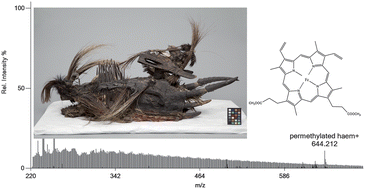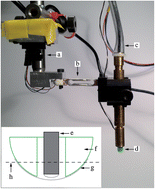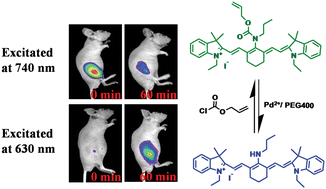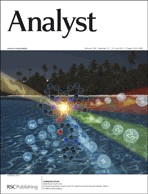Detecting multiple target species simultaneously via a single detection mechanism remains an attractive goal for biologically relevant studies.
Ruo Yuan and Jingdong Peng from the College of Chemistry and Chemical Engineering, Southwest University, China, have successfully developed a multiplexed electrochemical sensor for two biological targets.
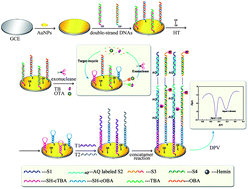
Multiplexed electrochemical sensor for two biological targets
In the study, gold nanoparticles were electrochemically deposted on a highly polished glass carbon electrode and functionalised by thrombin- and ochratoxin A-binding apatmers. In the presence of the targets, an exonuclease digestion occurred allowing the target molecules to be recycled. The single stranded product of the exonuclease digestions were then used as initiation sequences for concatamer reaction designed to introduce two distinct electrochemically active species in a sequence specific manner. Only by the initial presence of either target would the related concatamer and, by extention, the electroactive species be present.
By this elaborate system of aptamer binding, exonuclease digestion, concatamer reaction and electrochemical detection the researchers were able to simultaneously detect thrombin, a blood-clotting protein, over the range 0.1 pM – 40 nM and ochratoxin A, a nephrotic toxin, over the range 0.4 pM – 35 nM.
To read the full article, please click on the link below:
An aptasensing platform for simultaneous detection of multiple analytes based on the amplification of exonuclease-catalyzed target recycling and DNA concatemers
Liping Jiang, Jingdong Peng, Ruo Yuan, Yaqin Chai, Yali Yuan, Lijuan Bai and Yan Wang
Analyst, 2013, Advance Article
DOI: 10.1039/C3AN00757J











